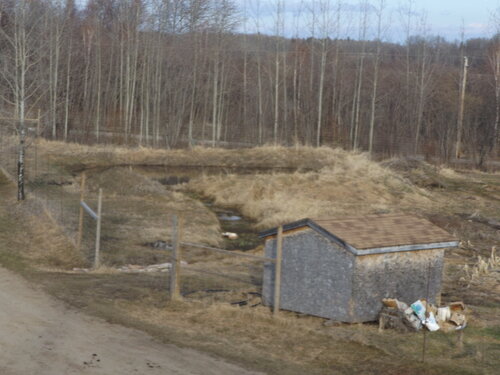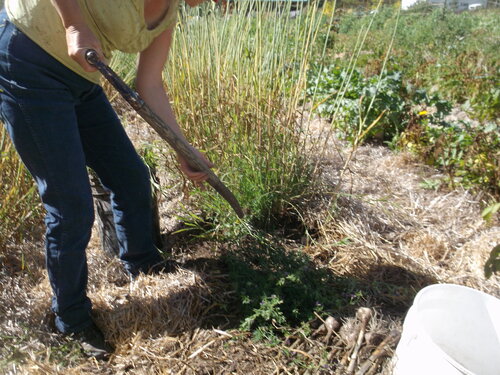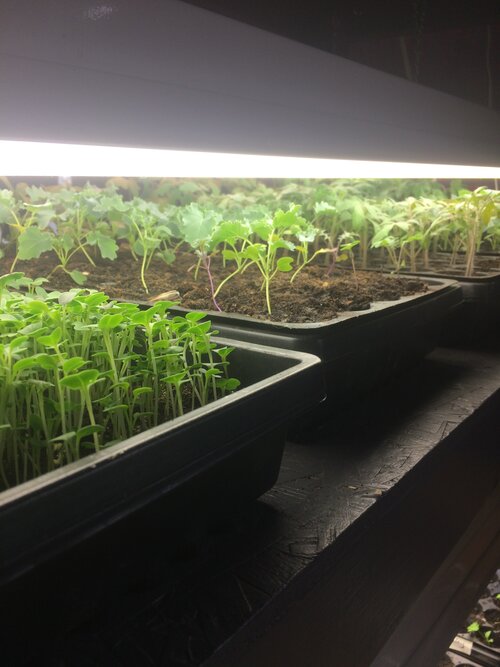HOW WE CAN BE THE SOLUTION
posted on
May 1, 2020
Last week we were watching the creek rise to levels we have not seen in the thirty-four years we have lived here. There was a point when we actually took our vehicles to the other side of the culvert because we didn’t know if the road would still be passable by morning.
My question; if the land was being stewarded well would this flooding be so dramatic?
Year one of the permaculture orchard Pond and swales in place waiting for trees.
When large tracts of land are cleared for monoculture cropping it seems that there is nothing to slow the movement of run-off water from the snow melt. We see so much top soil being washed into the creeks.
Our land is sloped so we have attempted to apply design that follows permaculture principles. Our raised garden beds are formed to follow the contour of the land. These raised rows serves three purposes: 1) It allows us to gain more depth of topsoil for growing root crops, 2) It slows the movement of water down the slope and 3) the pathways that are created when we form the beds help catch and store water that the plants can access when needed.
Our farm is mostly covered in perennial pastures and treed forests. Both of these elements help slow the flow of water that causes so much erosion on bare fields.
The nature of a garden is that there will be some bare soil, but we look to nature to solve the erosion problem that happens to bare soil. Nature is modest; she wants a covering. That comes in many forms such as perennial plants and trees, leaf litter or deadfall all of which are present in a forest.
Year two in the permaculture orchard/garden. Harvesting garlic.
My grandparents farm was set up to work with nature. The house and outbuildings were located on higher ground while the garden was on a bench above the creek. Higher up the slope was forested. This placement of elements within the farm’s design worked to create abundance. By placing the house and outbuildings on the mid slopes the trees above would help capture excess water, then slowly release it downhill. This principle helps to keep flooding at bay. As excess water now slowly moves down to the bottom where the creeks are the garden is watered from the bottom up with no work on their part. Because of this careful placement they were able to grow the food that they needed throughout the year without being dependent on the grocery stores.
As we find ourselves thrown into a world of uncertainty surround COVID 19, I am seeing a desire in people to get back to some kind of basic connection of shorter food supply chains. There has been a rush to purchase seeds. If any of you have tried to order garden seeds online you will know what I am talking about. The other day I went online to one of the company’s websites who I routinely purchase from. At 10 am they already had their online store closed. I was thankful I wasn’t there to purchase seeds, but just looking at planting guides.
A few of the many plants awaiting warmer weather to be moved outdoors to the permaculture orchard/garden.
We are also seeing a shortening of the food supply chain with an increase in people searching out local food producers. We know that resiliency is easier to achieve on a smaller scale. A saying I love is; land that feels the farmer is much better tended. I believe this is so true. As an example; when a gardener walks around the garden they will see what needs to be done. That weed that pops up and sucks up water and nutrients can be removed so the desirable plants will thrive.
Our goal is to grow enough food to last our family for a year. So far, we haven’t quite managed that, but we are getting closer. We are in the thick of starting plants inside to moved outside when the weather is conducive for them. I don’t have a greenhouse so my home turns into a jungle this time of year. It is warming enough during the days now that a lot of them can be moved outside for a few hours.
This is one way we cope with situations like COVID 19 and economic downturns that are outside our control. I would also like to say that we are debt-free, but we are not. Every year however, we do strive to live a more resilient life.
As many of you know our mission is to steward the land that has
been entrusted to our care in order to produce nutrient-dense foods that can
contribute to the health and well-being of the people we serve while earning a
right livelihood.
As individuals and a community if we want the assurance of abundant food we need to choose locally grown and produced food. When we shift our food reliance away from just-in-time grocery stores to local producers we will be in a much more resilient position to cope in a crisis. There are many small farms that would love to serve those who don’t produce their own food. We have food; nutrient-dense, high quality food that we have put our hearts into raising.
Our modern food system is broken! You can be part of the solution. Your first step is to connect with us.






